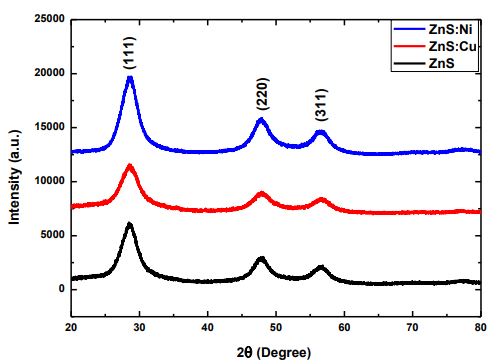Photocatalytic Degradation of Methylene Blue Dye by Using Different Nanoparticles
DOI:
https://doi.org/10.37934/armne.17.1.117Keywords:
Nanoparticles, UV visible spectrophotometer, methylene blue, uv and visible irradiationAbstract
Zinc sulfide nanoparticles (NPs) were produced through a straightforward and cost-efficient chemical co-precipitation technique, intended for use in the photocatalytic decomposition of methylene blue (MB) dye, both under ultraviolet and visible light exposure. To evaluate the synthesized nanoparticles, various analytical tools including ultraviolet-visible (UV-Vis) spectroscopy, scanning electron microscopy (SEM), transmission electron microscopy (TEM), and X-ray diffractometry (XRD) were employed. The XRD analysis confirmed the cubic symmetry of the synthesized NPs. SEM analysis revealed that the nanoparticles tend to aggregate, forming clusters of nanoparticles. TEM analysis illustrated that the ZnS nanoparticles exhibit a spherical morphology with uniform size distribution. Additionally, Fourier-transform infrared (FTIR) analysis exhibited a vibrational peak at 616 cm-1. The degradation of methyl blue was investigated using a UV-Vis spectrophotometer as part of the study.









